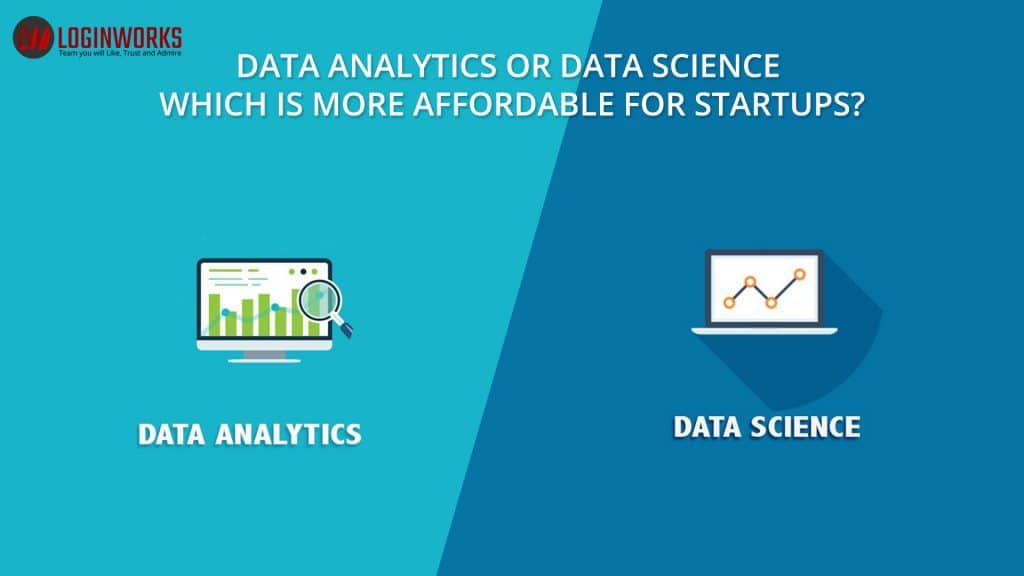Startups tend to collect large amounts of data to pave the path of their progress at a faster speed but have limited resources to store it. The solution to most of their issues is predictive analysis. This is true because they want to track the behavior of potential customers for maybe a year or two.
Jump to Section
WHAT ROLES DO DATA SCIENTISTS AND DATA ANALYSTS PLAY?
To answer the question of which is a more affordable option for startups – a Data Scientist or a Data Analyst – let us look at the job profile and scope of both these professionals:
The Data Science Process
Below are the steps that the data science process involves.
Step #1: Answering queries
The Scientist’s machine learning model has to answer a question or solve a problem. Of course, there will be many permutations and combinations of data sets to deal with different queries. So, the data model must be a comprehensive set of parameters to deal with all eventualities.
Step #2: Collecting data
Web scraping or collection of real-time Big Data is the next step that a Data Scientist will undertake. Sample streamed data will be collected initially to test and retest the data model.
Step #3: Reviewing the Data

Even the best data models can collect irrelevant data. At times, web users enter wrong information either because of typo errors or intentional falsification. This data is collected along with the rest of the information. Reviewing the data for relevancy and accuracy is the next step that a Data Scientist has to perform.
Step #4: Cleaning the data

This stage involves:
- Co-relating different data sets from multiple sources for logical processes.
- Checking for redundancies or unusual patterns so that, as a Scientist, you can add parameters to deal with these situations.
- Evaluating the relevance of the data to the client’s needs.
- Deciding whether the data collected is of any use or fresh data has to be collected for testing your machine learning model.
Step #5. Testing the Data
Storing the information so that it can be used for retesting and reporting is the next stage in the Data Science process. The common tools used by Data Scientists are R, SQL, and Python. The stored data is used in subsets for pre-processing. So you have to formulate scripts that will automatically correct the anomalies and reformat the data into logical, quantifiable data sets. This involves:
- Building the data model to answer specific queries.
- Cross-validating the data.
- Using regression analysis to test the data.
- Comparing the efficacy of your algorithm against other logical techniques.
- Finalizing your model once it shows a high level of efficiency in producing the desired results.
The Data Scientist has to also consider issues like logistics, the privacy of data, and accessibility protocols while finalizing the data model. Once your data model is honed to perfection and all the parameters are in place, it is time to test it against real-time live data.
Step #6: Risk assessment

Every production unit or service industry has several key players whose hand is involved in the finished product. Suppliers of raw material, labor, warehouses, distribution systems, marketing and sales, courier services, wholesalers, retailers, and many other factors are involved in the supply chain.
Assessing the risk and checking the credibility of all the external players is also a very important role that a Data Scientist plays. In fact, this is one of the most crucial roles of a Scientist. Without a risk assessment, your client will not know if any of the partners have compliance issues.
The Role of the Data Analyst
If Data Science is the toolbox, then Data Analysis is the set of tools inside the box. The typical tasks that a Data Analyst performs are:
- More focused data analysis to answer specific queries and needs.
- Unlike a Data Scientist who will repopulate the databank for retesting the model, the Data Analyst will sort through the existing information to search for the data sets that would fit the desired parameters. This means that the model is designed with a very specific query in mind and the data collected has to be relevant to that query. So the scope of mining and testing is limited compared to Data Science.
- The Data Analysis process involves sorting through existing data like past experiences, current trends, desired markets that the client wants to tap, etc. The aim is solely to track things like customer behavior, their preferences, and seasonal ups and downs in demand in order to implement short-term marketing strategies. The tools usually used by Data Analysts are R, Excel, Python, and Tableau.
Data Science Is a Team Effort
Data Science involves a number of specialists who work as a team. They use a mix-and-match of data models and techniques to get the desired information, including the tracking of customer online activities. Data Science uses statistical formulas to access, process, and manipulate data so that the Analyst can query it for client-specific analysis and reporting.
Based on the skillset, a Data Scientist can be a Data Researcher, Data Developers, Creative Developer, Data Businessperson, or Data Scientist. A Data Analyst can take on roles like Database Administrator, Data Architect, Operations, or Analytics Engineer.
So when you look at the Data Scientist’s scope of work, you can guess that it is a more specialized field and requires a deeper knowledge of Business Intelligence techniques and programming. Data Scientists in most cases work in an agency that offers specialist services to business organizations.
Final Words
There are many companies today who employ an in-house Data Analyst to help them globalize their market and create brand value. Since the Analyst role is limited, the remuneration expected is also lower than what a company might have to pay a Scientist. Also, there are many freelance Data Analysts who offer their expertise for affordable fees on a project basis. Startups, with their limited resources, will usually prefer to employ the services of a Data Analyst because it is a more affordable choice and because they have short-term goals that need to be met quickly.
- Business Intelligence Vs Data Analytics: What’s the Difference? - December 10, 2020
- Effective Ways Data Analytics Helps Improve Business Growth - July 28, 2020
- How the Automotive Industry is Benefitting From Web Scraping - July 23, 2020

